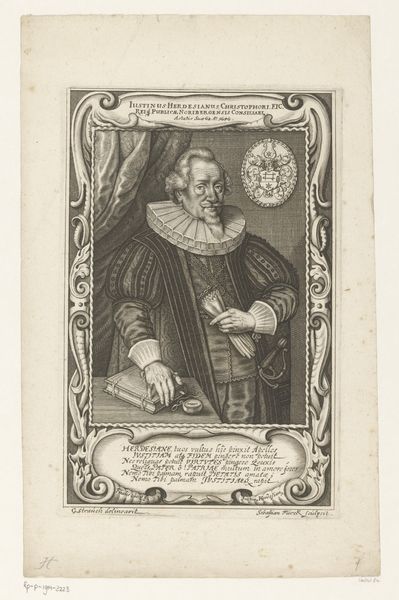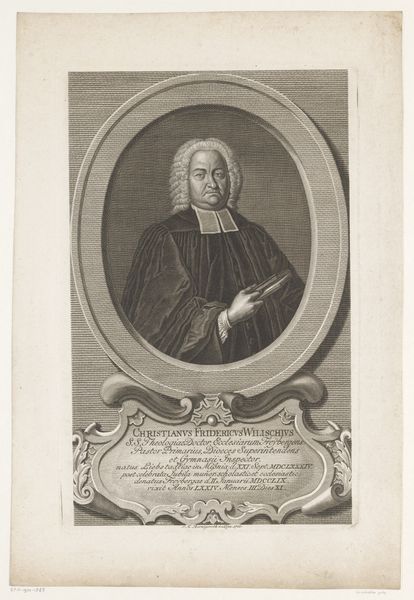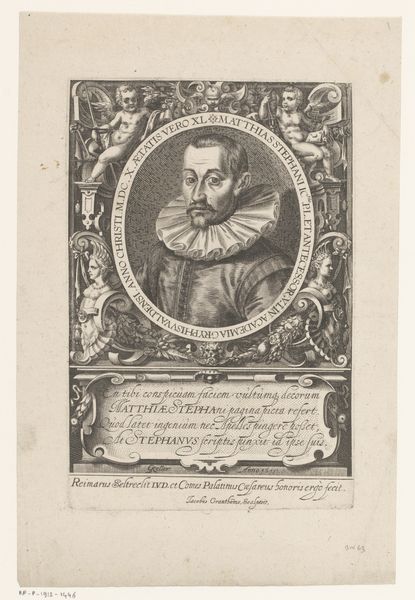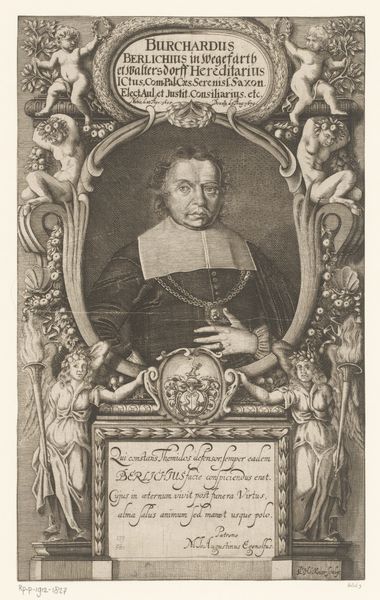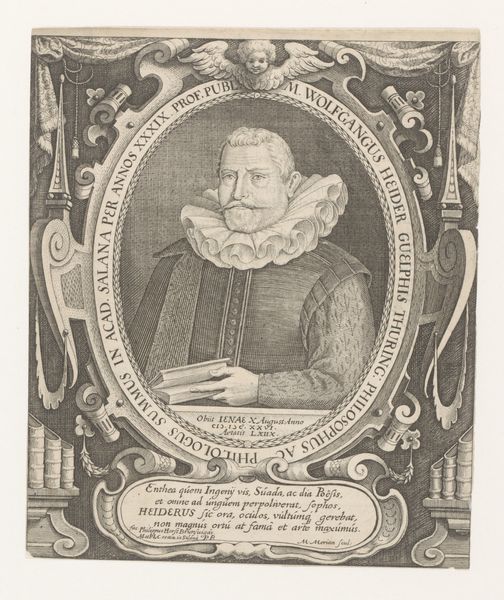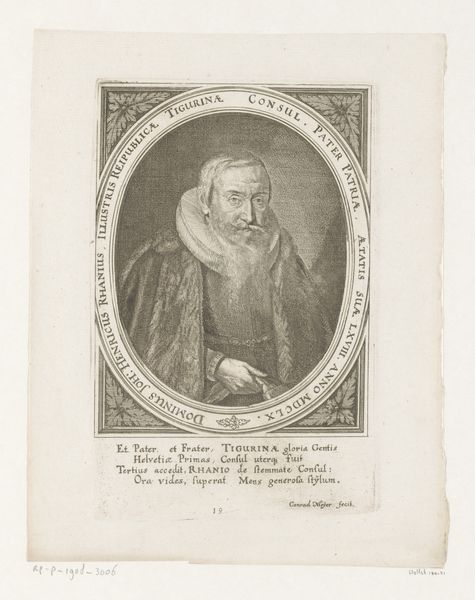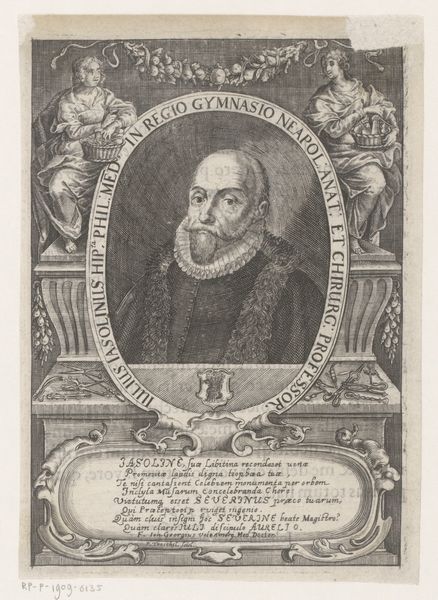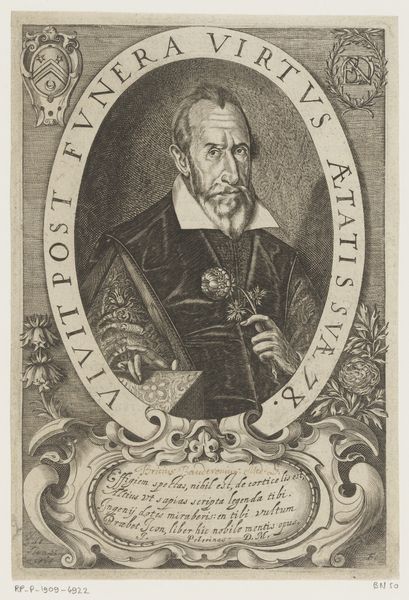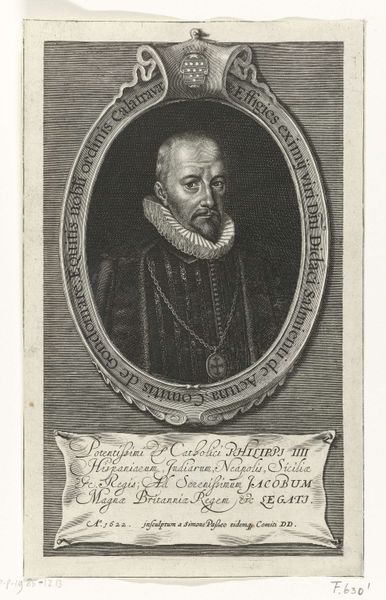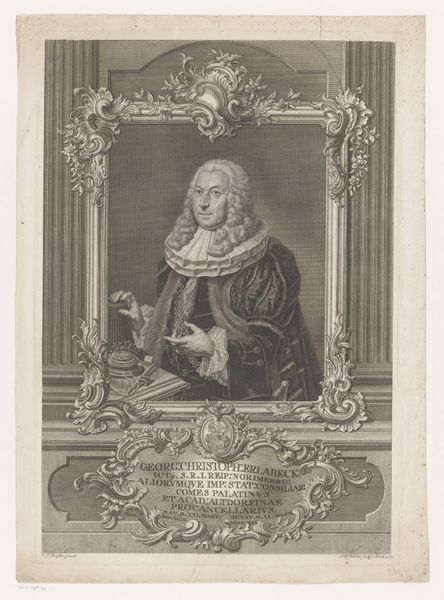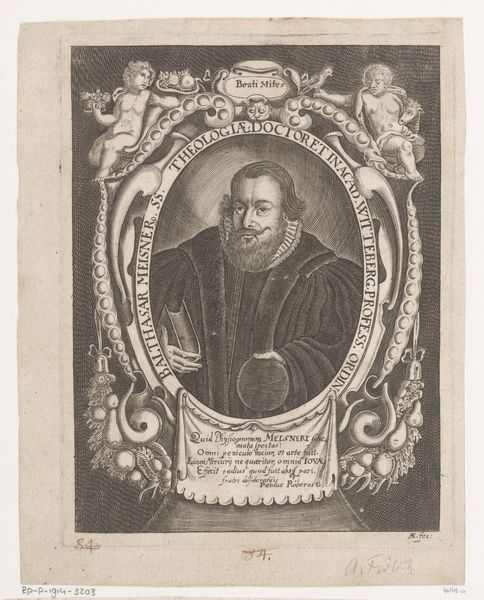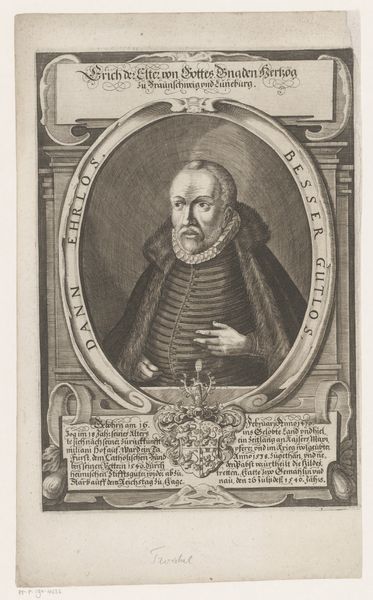
print, engraving
#
portrait
#
aged paper
#
toned paper
#
baroque
# print
#
old engraving style
#
19th century
#
history-painting
#
engraving
Dimensions: height 226 mm, width 152 mm
Copyright: Rijks Museum: Open Domain
Sebastian Furck made this engraving of Johann Schwind in 1647. The printmaking process, involving carving lines into a metal plate and then inking and pressing it onto paper, was then relatively new, an exciting technology. Look closely, and you can see the distinctive character it lends to the image. The sharp, precise lines capture details like Schwind's lace collar and the texture of his robe. Notice how Furck uses hatching and cross-hatching to create areas of light and shadow, giving the portrait depth. But what makes this print truly compelling is its connection to the rise of capitalism. The relatively inexpensive medium of printmaking allowed for wider dissemination of images, fueling a growing market for portraiture among the emerging merchant class. Schwind, a city official, is presented here not as a powerful aristocrat, but as a respectable civic leader. This print is evidence of a shift in social values, where individual achievement and status, rather than inherited privilege, became increasingly important.
Comments
No comments
Be the first to comment and join the conversation on the ultimate creative platform.
